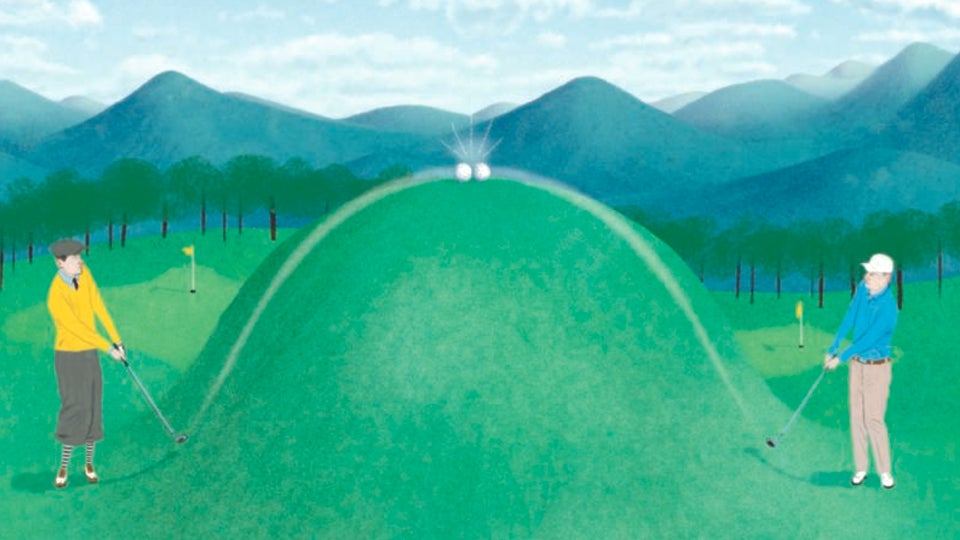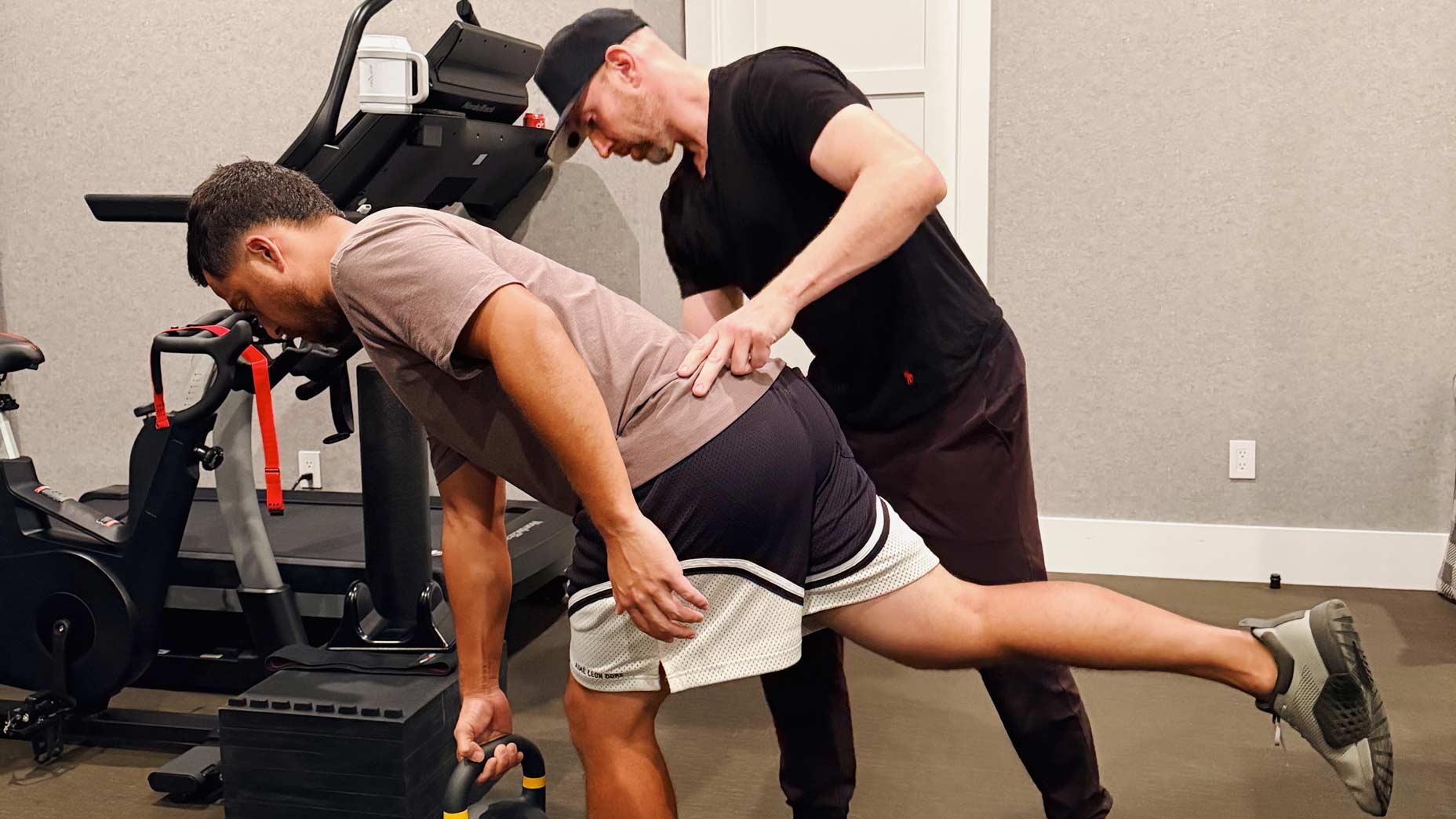Got a question about the Rules? Ask the Rules Guy — he won’t throw the book at you!
Dear Rules Guy:
My club championship was played after a night of heavy rain, and a large number of small worms were scattered across the greens. They impacted any putt hit over them. I knew it was legal to pick up the loose worms and move them from my line of play, but some of them had partially burrowed back underground. Are those worms also loose impediments? —TONY BOEING, CINCINNATI, OHIO
I can’t blame those critters for wanting to go underground. If a white, dimpled boulder was barreling down on me Raiders of the Lost Ark–style, I’d be looking for an escape route too. Under Decision 23/8, the half-burrowed invertebrates still meet the definition of a loose impediment. You may go ahead and remove the ones on your line of putt, without penalty. No need to be a worm-burner on the fairways and the greens.

Rules Man:
If my ball gets scuffed, how far can I go to remove the mark? I ask because I happen to carry a nail file in my bag and have been known to lightly file off the ball’s raised parts, or to scrape them off with my fingernails or teeth. Am I in the clear with the Good Book? —STEVE BUTLER, VIA E-MAIL
Rules Guy commends your frugality and preparedness, although your dental hygienist may have a different view. Under Rule 5-3, a scratched or scraped ball, unlike one that’s visibly cut, cracked or no longer round, isn’t unfit for play, so you indeed need to play on with the abraded orb until the hole’s conclusion. Rule 21 covers when you can clean your ball, but how you can clean it is less cut and dried. You may use your file, nails, chompers, or anything else to fix the scuff—but be careful not to alter the ball (such as by creating a flat spot) while doing so. To be safe, use very light pressure to remove only the raised part of the scuff, and consider using a soft-bristle toothbrush instead of the file.
Mr. Rules Guru:
I hit a fairway bunker shot that tunneled so deeply into the bunker face that the back of the ball was beyond the edge of the hazard. My interpretation of the unplayable ball rule would allow me to take a drop using the point on the ground directly above where the ball came to rest—after all, a ball coming to rest on a bridge over a water hazard is deemed to be in the hazard. Similarly, my ball was completely beneath the ground’s surface and no longer in, or touching, the bunker; therefore, I was not required to base my drop as though it were still in the hazard, right? — CHARLIE VANNOY, VIA E-MAIL
Charlie, can I assume by your meticulous, legalistic language that you’re an attorney? (Or maybe a contortionist?) Regardless, under Decision 13/4, an embedded ball is considered to be lying in the part of the course where it entered the ground. If the ball entered the ground in the bunker, it’s still in the bunker. Unless you count a backhoe among your 14 clubs, you’ll need to declare the ball unplayable under Rule 28. And bear in mind that in this situation, all three options available (each with a one-stroke penalty) require you to drop within the bunker. My advice: Keep the ball above ground until you’re putting.
GOT A RULES QUESTION?
Of course you do! Whatever it may be, send yours to rulesguy@golf.com and the question may be answered in an upcoming issue of GOLF. Until then, play by the Rules!






